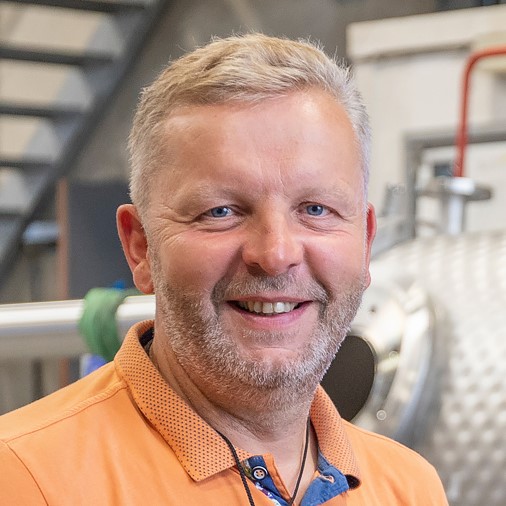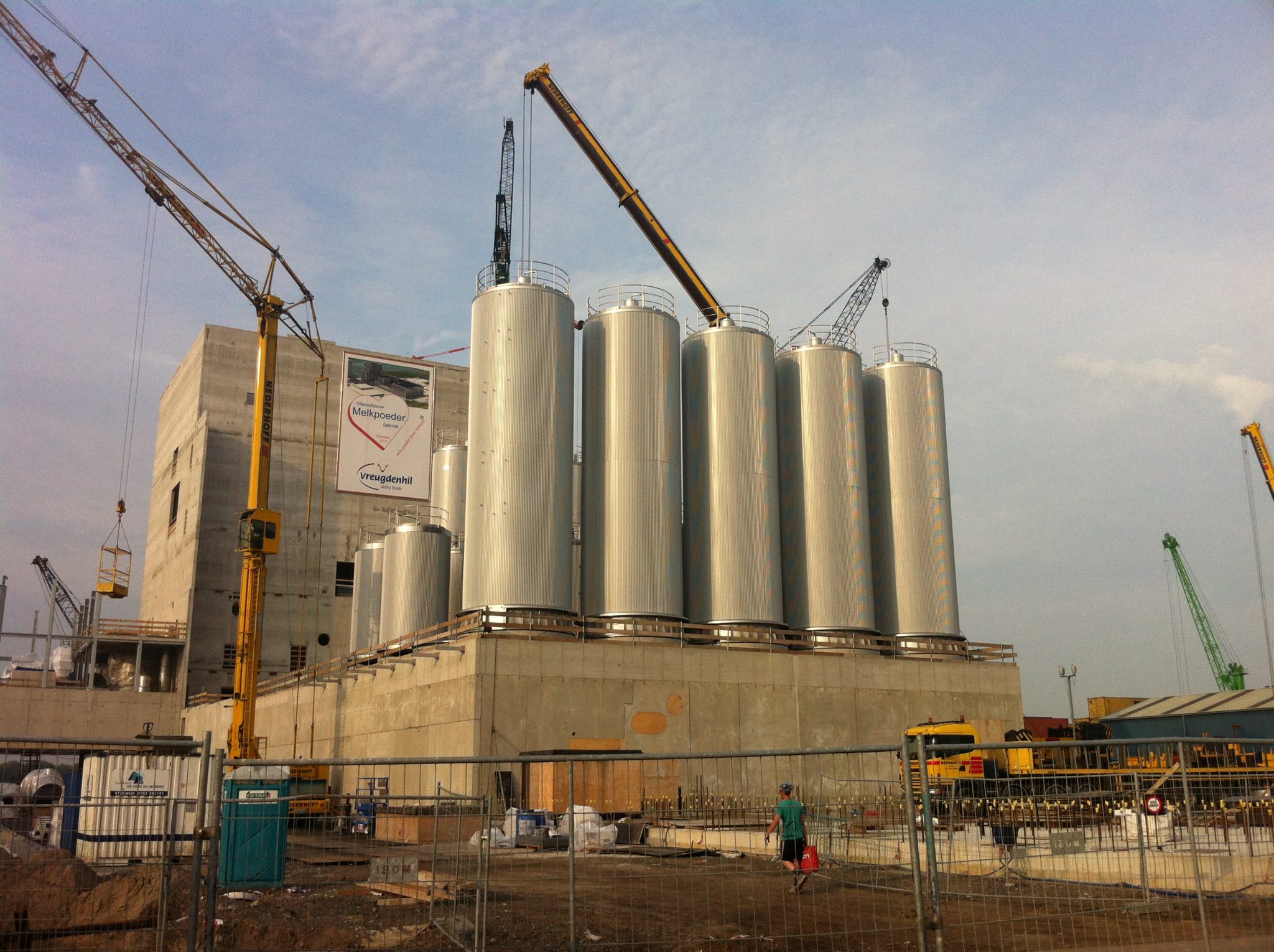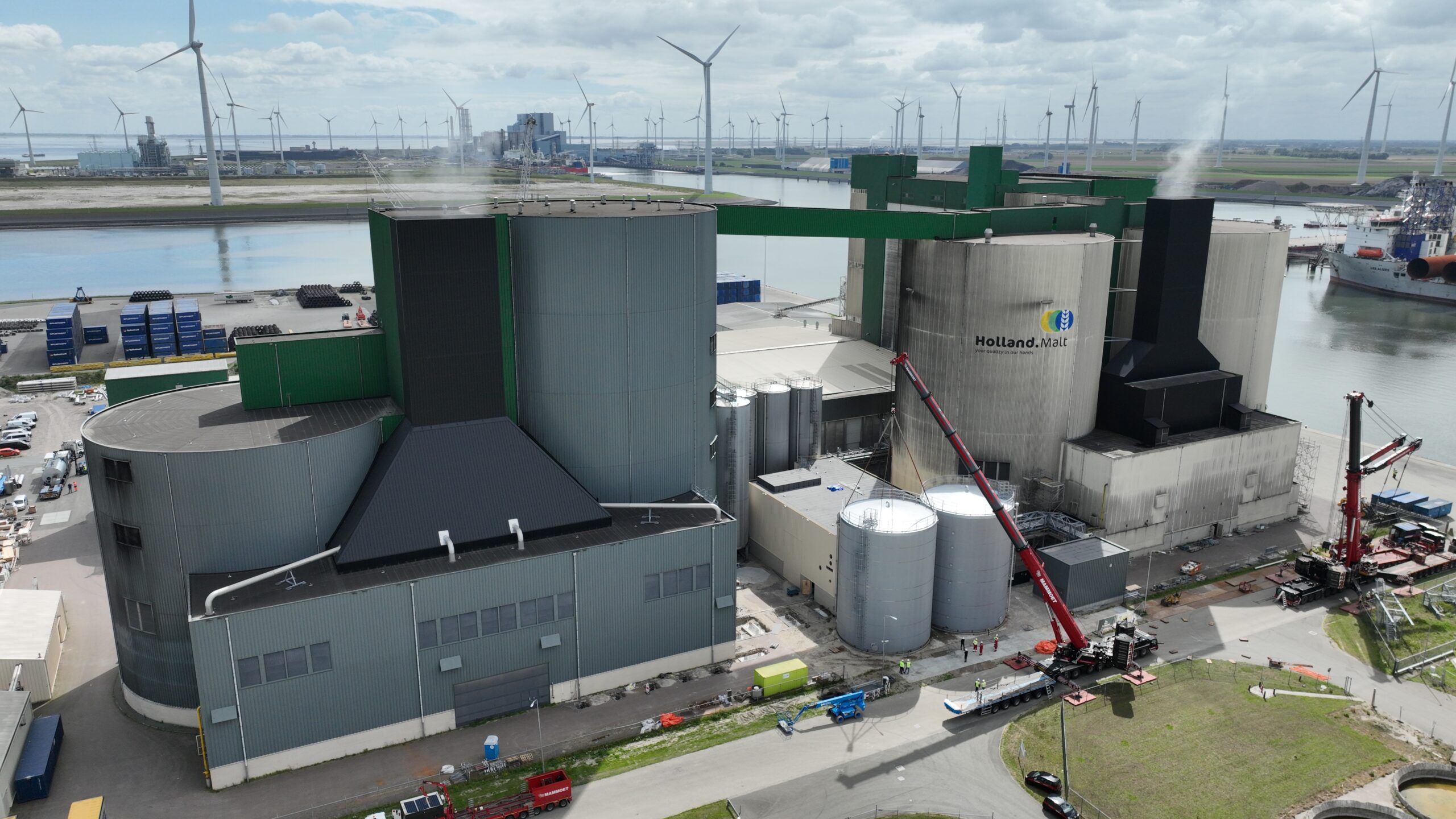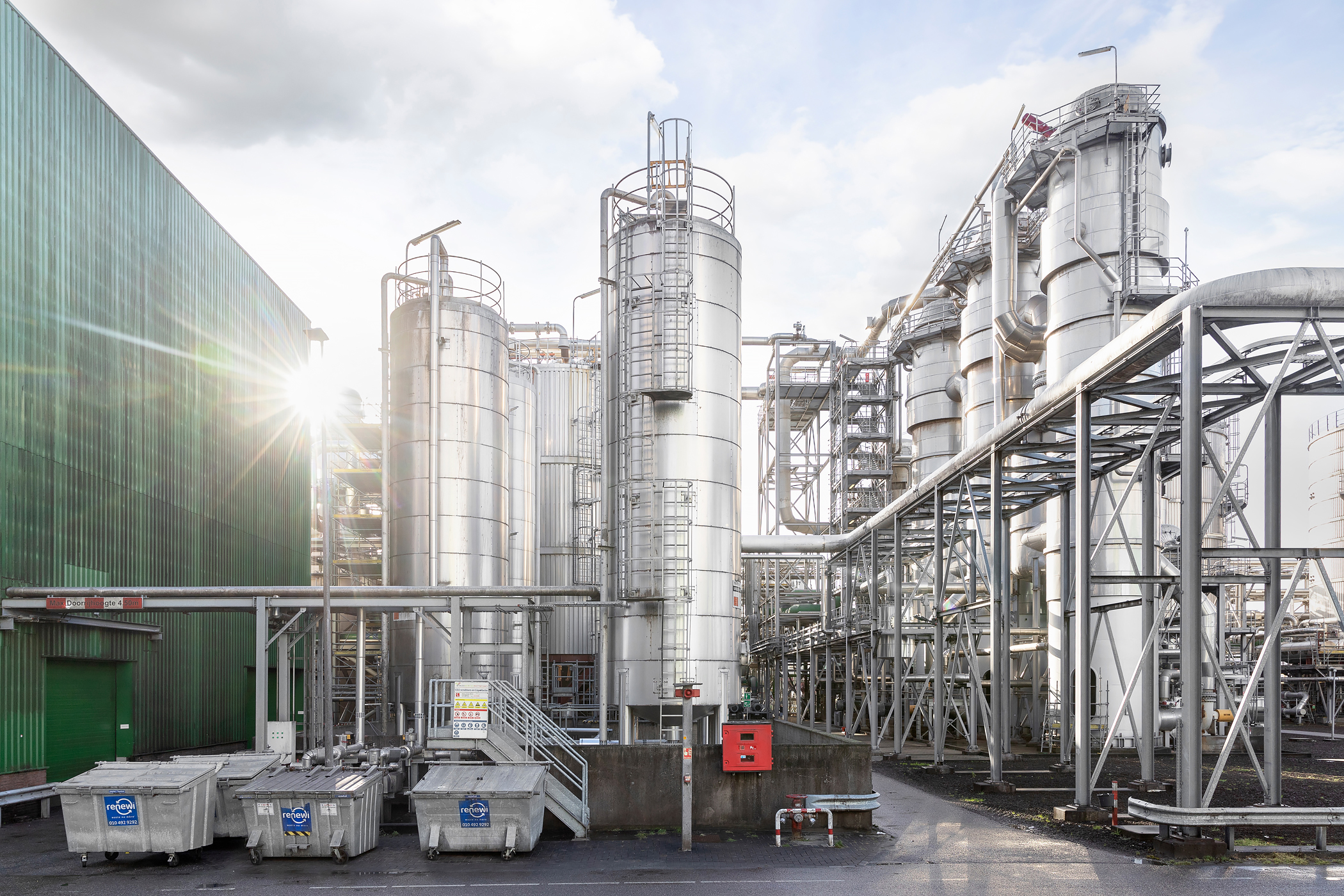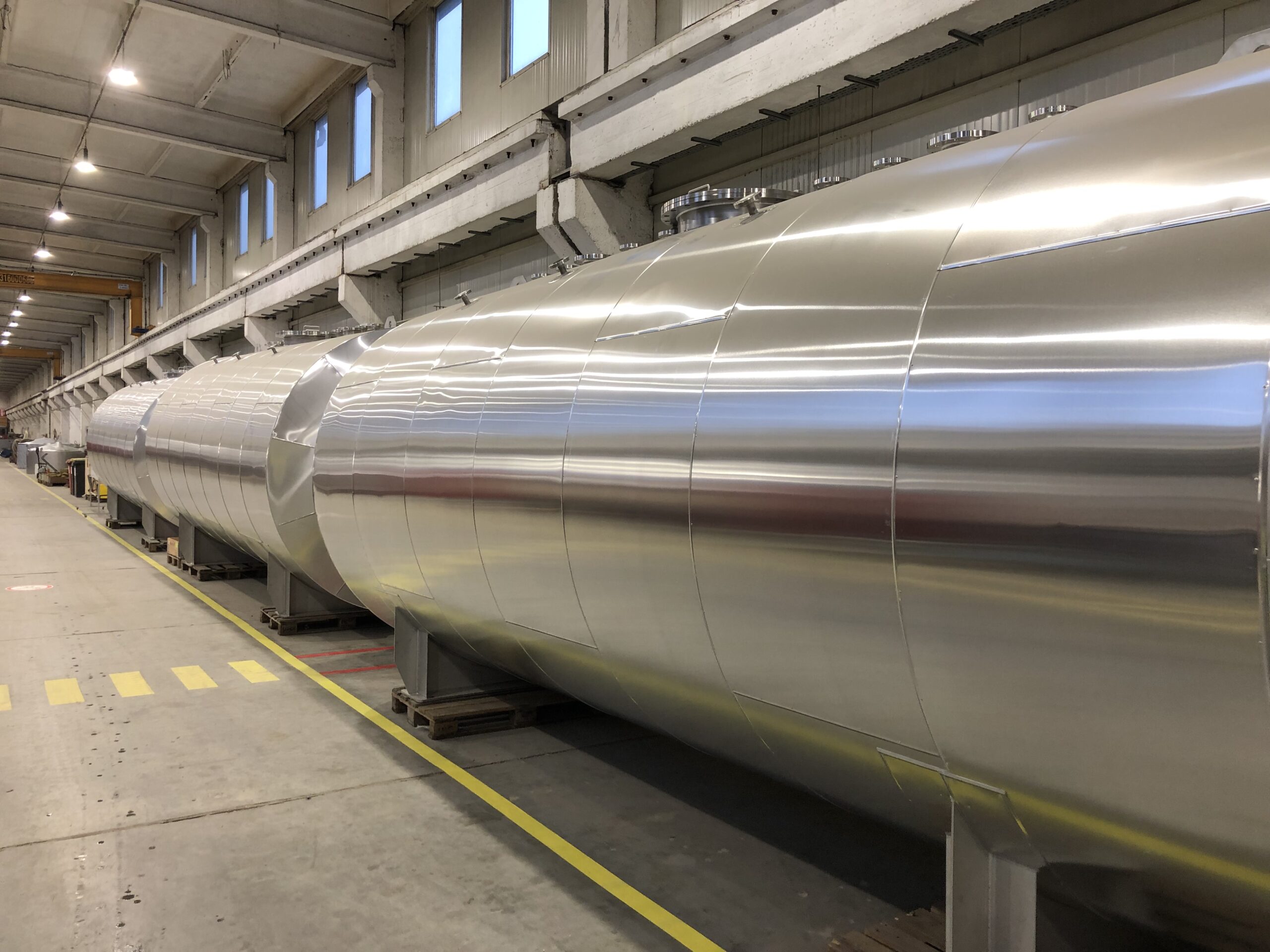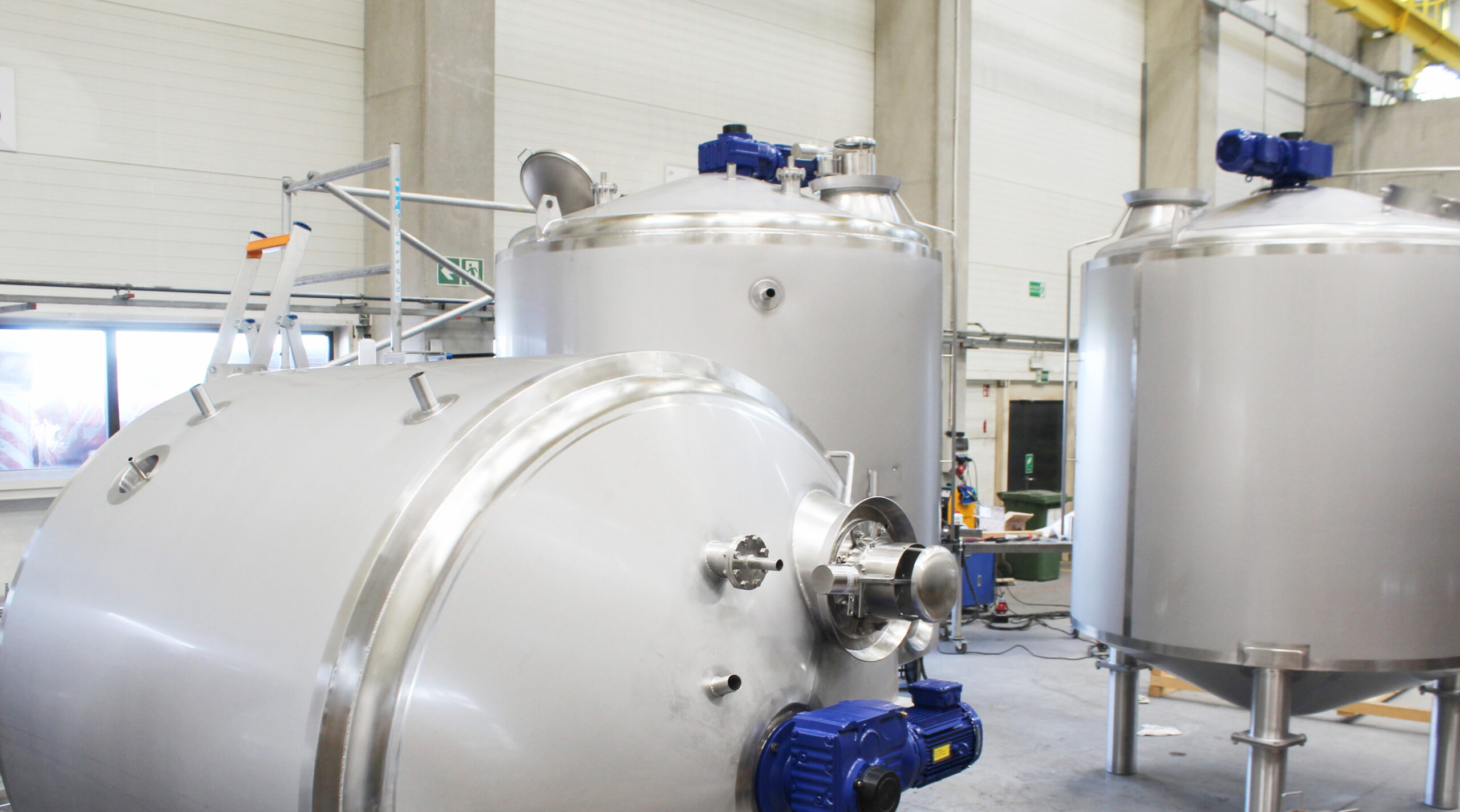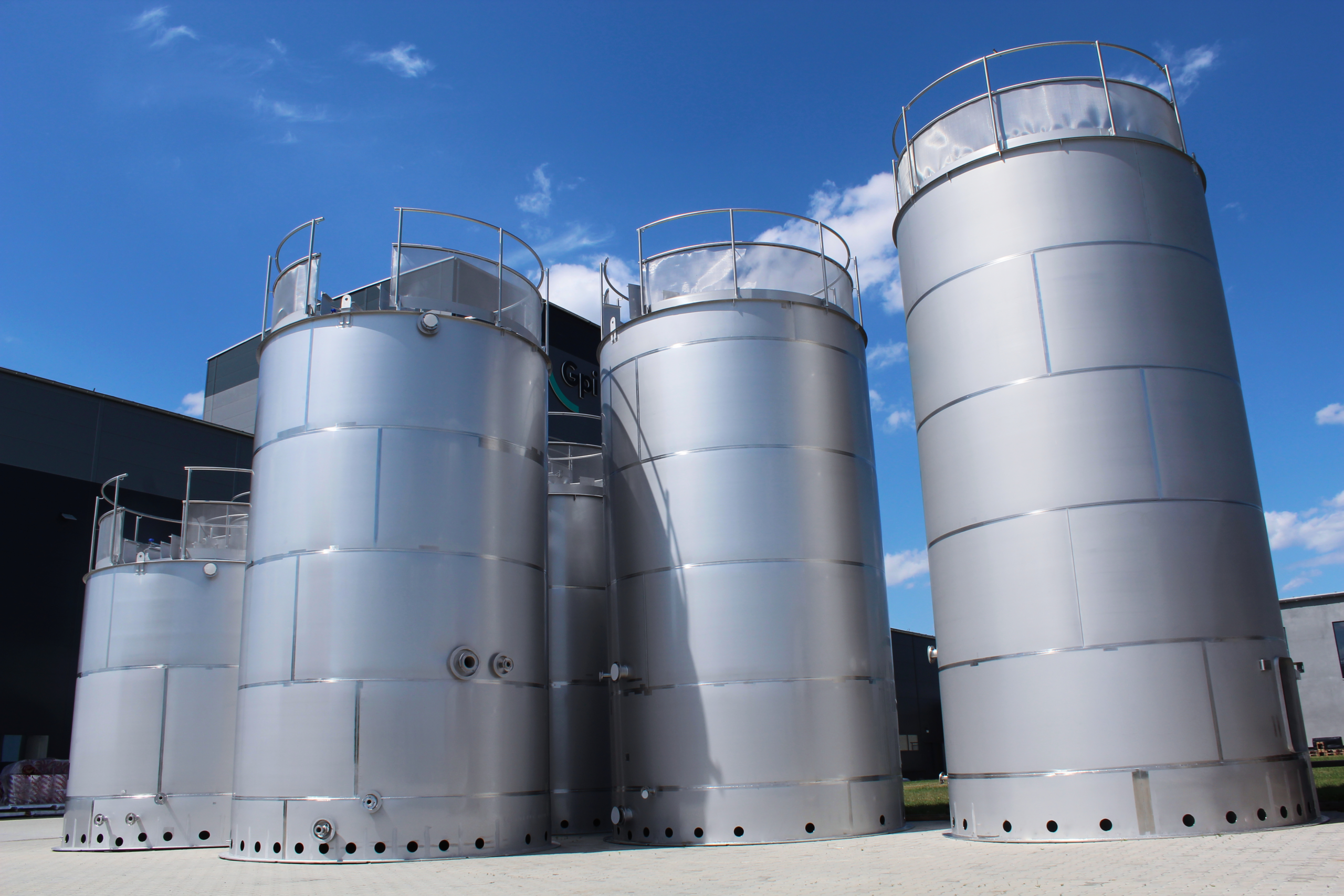CIP tanks
Self-Cleaning: Stainless Steel CIP Systems
Cleaning in Place, usually abbreviated to CIP, is a technique in which tanks (or other production components) are automatically cleaned without the need to detach or move parts of the tank. These CIP cleaning systems are increasingly replacing manual cleaning processes in a variety of industries.
Self-cleaning systems can save a lot of time and can attain a higher level of hygiene than manual cleaning.
Experienced Manufacturer of CIP Tanks
Gpi has extensive experience in the production of EN 14015 tanks, varying from tanks built in the factory up to +/- 500m3 to tanks built on-location up to +/-15,000 m3.
Depending on the desired design and design conditions, these tanks are equipped with a conical roof or a doomed roof, with or without anchors and stiffening rings, such as wind girders and/or a top corner ring.
Naturally, these tanks can be provided with a spiral staircase, a cage ladder or a stairway. In terms of material, a form of duplex is often chosen. Due to this material being stronger than normal austenitic stainless steel variants, thin walls can be employed, which ensures a more rapid, higher quality and more affordable tank.
What are CIP tanks used for?
CIP tanks are widely used in the food industry, breweries, dairy farms, and pharmaceutical industries, where hygiene has a vital role to play. The exact cleaning requirements differ per tank.
The production of a cleaning system is based on the CIP cleaning sequence. We produce efficent and customised CIP tanks so that they fully meet your sanitary needs.
We provide professional support in identifying the optimum dimensions and choosing the right cleaning methods to enable speedy project lead times, from the planning stage to the installation of your CIP tanks/system.

More information about our CIP tanks and installations?
How Does the CIP Cleaning System Work?
Conventional CIP cleaning takes place in seven stages to effectively clean the tank.
- Pre-rinse: The tank is flushed with water to remove any leftover residues, such as beer or yeast, making sure the equipment is ready for a deeper clean.
- Lye Cleaning: Next, lye is used as a cleaning agent to break down and remove organic matter from the tank surfaces.
- Water Rinse: After lye cleaning, the tank is rinsed with water again to wash away any remaining lye and loosened residues.
- Acid Cleaning: To tackle scale buildup, such as lime, an acid-based cleaner flows in the tank to dissolve these hard deposits.
- Second Water Rinse: The acid is then flushed out with another round of water rinsing, making sure no acidic residues remain.
- Disinfection: A disinfectant is applied to kill any lingering microorganisms, providing a microbiological deep clean of the tank. After a reaction time, the disinfectant is likewise flushed out.
- Final stage: The cleaning solutions used are pumped into a circuit. After cleaning has been completed, these can be reused, at least in part. This reduces the amount of cleaning agents and other cleaning chemicals needed for cleaning compared to manual cleaning.

Qualitative Design
The design of the CIP system is based on the sequence of CIP cleaning. If conventional cleaning using the 7-stage process is required, more CIP tanks will be needed than if the cleaning process is shorter or some of the stages are omitted.
The dimensions depend on the individual requirements decided in consultation with the customer. On the one hand, the size of the tanks being cleaned is a decisive factor, and on the other hand, consideration must be given to how many tanks need to be cleaned at any one time or whether CIP cleaning can be carried out on one tank only.
The CIP system should not be too small since planning must take into account that the volume of the cleaning agent is adequate for the individual rinsing cycle. Our engineers can help you make the right choices.
To enable speedy integration of the CIP system in your production, if necessary, the tanks and interfaces can be designed in 3D.

CIP Tank Appendages
Each tank in a CIP system fulfils a specific task. Gpi can supply all tanks that are required for a complete CIP system, from simple stacking water tanks for capturing the rinse water to chemical tanks with special requirements for the materials used.
The tanks can be insulated and manufactured with heating zones or jacket heating.
As an experienced manufacturer of CIP systems, Gpi can also design your standard measuring instruments, such as temperature sensors and level gauges in the tanks.

Your CIP Tanks Can Be Constructed Either in Our Factory or on Location
In the Netherlands, we have two manufacturing plants, in Lopik and Groot-Ammers. Tanks can be transported by road from the Lopik site and from Groot-Ammers by water. From our two factories in Poland (Skarbimierz or Brzeg) tanks are delivered by road.
Likewise, if transport is difficult or impossible, we also apply innovative construction methods so that we can build on-site.

